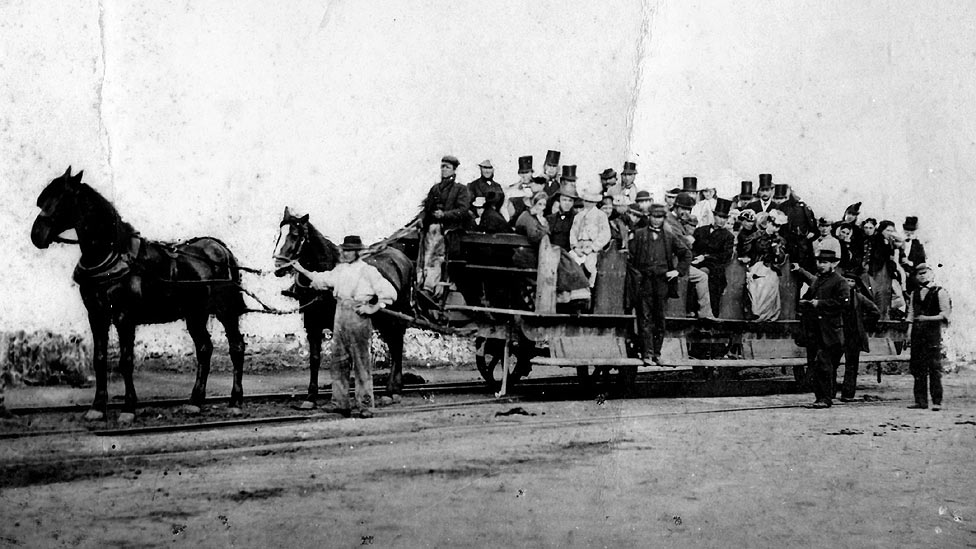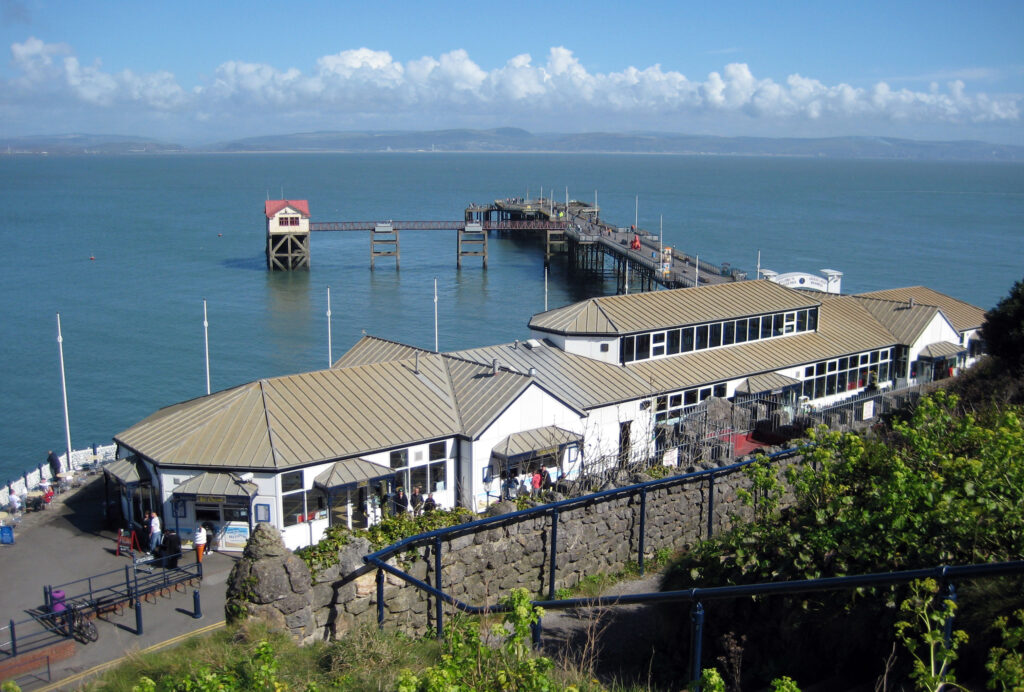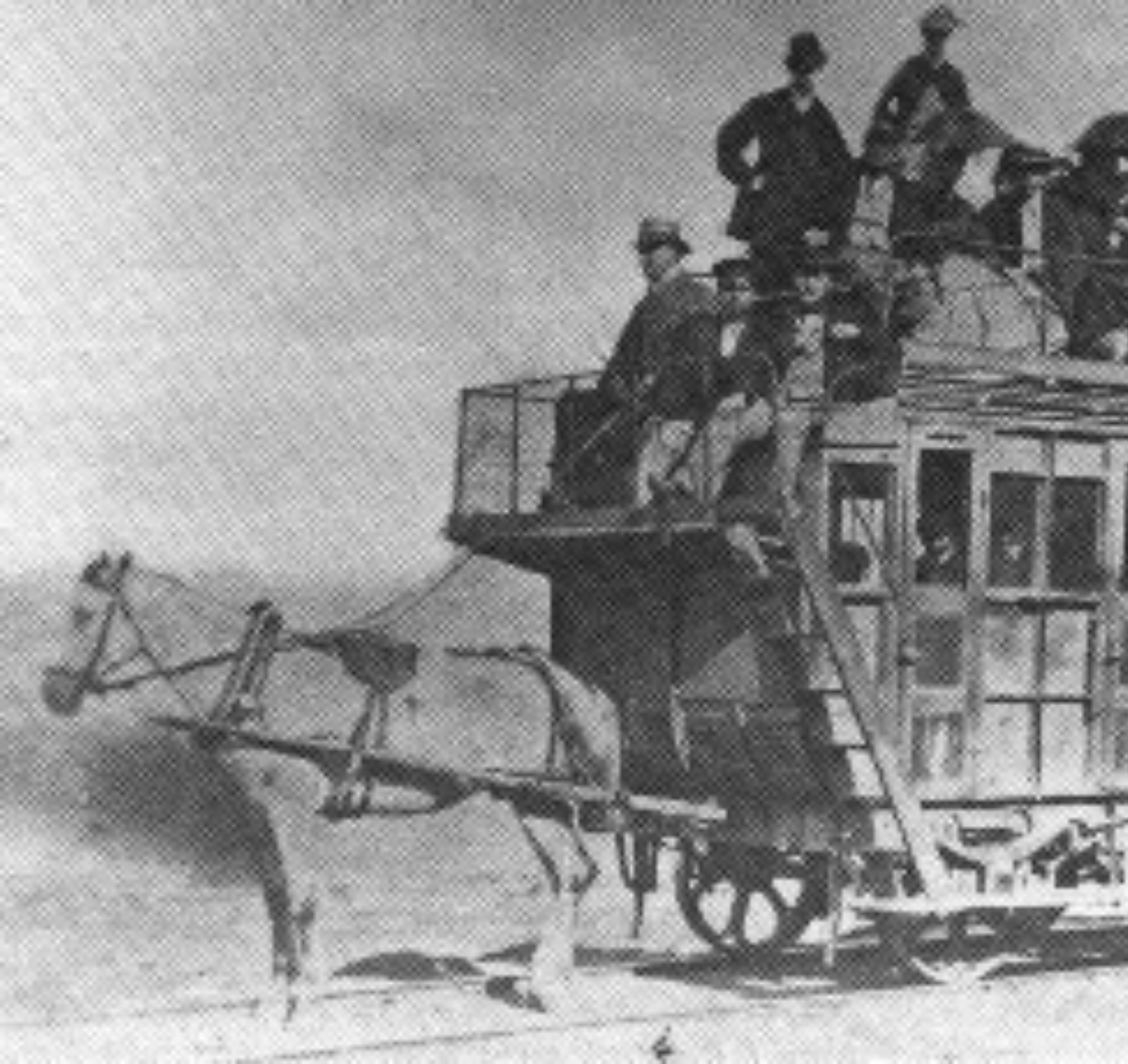The Swansea and Mumbles Railway was the world’s first passenger horsecar railway. Let’s take a closer look.
Table of Contents
Origins
All the way back in 1804 permission was given to build a railway line between Swansea and Oystermouth in South Wales. Osytermouth is a village in the Mumbles district. This railway line was planned in order to transport goods- mostly quarried materials- from the Swansea Canal to the harbour at the mouth -where a river enters the sea- of the River Tawe. A railway was needed because there was no road between the two locations.
Because everyone is wondering the River Tawe is 30 miles long and starts in the Brecon Beacons National Park – had to try really hard to make sure I didn’t type bacon there.
The railway company became known as the Oystermouth Railway and the first tracks were laid towards the end of 1804 and it was, as would become common moving forward, richer people in the area who funded it.
The name “Osyermouth Railway” didn’t last long and the railway soon became lovingly known as the Swansea and Mumbles Railway.
The first passengers
Construction of the railway was completed in 1806 but there was no formal ceremony to celebrate its opening. In the years to come huge celebrations would mark the opening of most of the railways in Britain.
The railway was operated by horse-drawn vehicles- or as normal people would say a horse-drawn carriage on rails and for the first handful of months, the railway operated as it had planned transporting quarried goods.
In February 1807 things changed a little bit as permission was given for the railway to pull passengers.
One of those “rich people” Benjamin French paid the company twenty pounds to carry passengers and the railway did so for an initial 12-month period.
It might not be accurate but it is thought that the 25th of March 1807 was when the first service carrying passengers between Swansea and Oystermouth. I’d love to go back in time and be able to see what everybody thought.

I say that but it was horse-drawn carriages so maybe it wasn’t that different to what they were used to. The rails would have been smoother and less bumpy than any roads or land they’d travelled on before though… great for the bottom I hear.
This makes the Swansea and Mumbles Railway the first railway in the world to become a passenger railway. And if that wasn’t enough of a claim to fame it also has the first recorded railway station called “The Mount”.
The Mount
The first recorded railway station “The Mount” was where passengers were picked up to travel to Oystermouth. Sadly, we don’t know what this station looked like. It probably didn’t have platforms or toilets or even much of a booking office. Its original location is close to the Swansea Museum today.
Competition
If you were looking for any evidence that the new passenger services on the Swansea and Mumbles Railway were popular and had been successful then look no further than the fact that Benjamin French- alongside two others- returned the following year and offered £25 for the passenger transport to continue.
And continue it did until 1826 due to the opening of a road parallel with the railway line which robbed the railway of most of its passengers. 1826 is notable and it’s a year after the Stockton and Darlington Railway opened.
If you were to google the first passenger railway then the Stockton and Darlington would be the first returned information. This isn’t false, but what it doesn’t say is that the Stockton and Darlington Railway was the first steam-powered passenger-pulling railway. It’s the whole “George Stephenson” hype that overshadows people looking into things more critically.
The Swansea and Mumbles Railway was in operation 20 years before the Stockton and Darlington Railway.
Enter steam
It wasn’t until 1877 that the horses on the Swansea and Mumbles Railway were replaced with steam locomotives. Trials took place, and the trials were considered successful so steam locomotives entered the railways in Swansea… Although there were some horse-drawn services still in operation until 1896.
A new company was formed in 1889 called the Mumbles Railway & Pier Company. This company was incorporated into the main Swansea and Mumbles Railway to extend the existing track from Oystermouth to a new pier close to Mumbles head- right to the coastline. The pier, where the station was, is still there today for you to go have a look at.
This new section of track was fully opened in 1898.

The steam locomotives which eventually replaced the horse-drawn services were a ragtag group. By that I mean they weren’t all built to match. The railway company bought what was available- as long as it could do the job.
There were saddle tanks (imagine Percy from Thomas the Tank Engine), and locomotives from Leeds, Gateshead and elsewhere, making the collection of locomotives on the Swansea and Mumbles Railway one of the most diverse.
For the railway’s 100th anniversary in 1904, they received a royal visit from King Edward VII – Queen Victoria’s successor- There was a further royal visit in 1920 when King George V and Queen Mary visited.
Electricity
The revolution arrived for the Swansea and Mumbles Railway in the shape of line electrification in 1928. The railway used three main forms of power over the years from horses to steam to electricity – the holy trinity if you will.
After tests, regular electric services were introduced on the 21st of March 1929 using some wonderful double-decker cars built by the Brush Electrical Engineering Company. These cars were the largest ever built for a service in Britain with each one being able to seat 106 passengers.
They tended to run in pairs so you could seat 212- needed a calculator for that one- passengers at a time.
Closure
The Swansea and Mumbles Railway was purchased by the South Wales Transport Company in 1958 and the process to close the railway began towards the end of 1959 with the closure of the Southend to the Pier stretch of the line on the 11th October 1959.
The final train to travel from Swansea to Mumbles was driven by Frank Dunkin- worker since 1907- on the 5th January 1960.
What remains
For preservation one of the old double-decker cars was saved by members of Leeds University and stored at the Middleton Railway. Infuriatingly this car was heavily vandalised by sorry excuses of human beings- might sound harsh, but these sorts of people are class A buffoons- and was eventually destroyed by a fire.
There was the front end of a car saved by the Swansea Museum but it suffered years of neglect. It was restored by the Railway Club of Wales and is now in the Tram Shed next to the National Waterfront Museum.
It’s slightly heartbreaking that so little remains of such an important feature of history.
Wrapping it up
There are so many unknown stories from the railway world that just aren’t well enough known because everyone is always shouting about how amazing George Stephenson was or how cool Flying Scotsman is.
When you dig a little deeper you’ll find so many stories like this and through this not-so-romantic blog, my YouTube channel and my not-so-romantic railways series, I aim to keep telling these stories.
What to read next
If you’ve enjoyed this Not-So-Romantic blog post then here are some more you might also enjoy!
